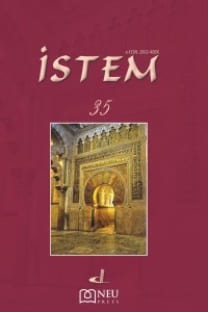SELÇUKLULAR’IN DİN POLİTİKASI
Religious Policy at the Seljukites
The 11th (A.H.4th) century when the Seljukites emerged in the historical scene was an era of sectarian conflict in the region where they began to expand. This led the Seljukites to adapt a regional policy such as supporting the majority Sunnis against the spreading and extreme Shia-Esoteric trends supported by the Fatimîds. They were, however, careful not to create any disturbance among other religious communities and sects. Through this policy, the Seljuki state managed to rely not only on the Sunni majority support in their region but also receive the support of the Sunnis living under the Esoteric Fatimids, therefore weakening their power. The overall justice and tolerance in applying this policy of balance brought to the Seljukites the sympathy of not only the Sunnis but other moderate religious communities and schools. The Nizamiyyah madrasas founded by Nizam al-Mulk with the support of Alparslan and Malikshah had a crucial place in providing cultural and scholarly ground for the ‘sunnification’ policy of the Seljukites
- ISSN: 1304-0618
- Yayın Aralığı: Yılda 2 Sayı
- Başlangıç: 2003
- Yayıncı: N.E.Ü.İlahiyat Fakültesi İslam Tarihi ve Sanatları Bölümü
Sayıdaki Diğer Makaleler
ŞEYHÜLİSLAM MEHMET EFENDİ VE TARİHÇİLİĞİ
CÂHİLİYYE VE HZ.PEYGAMBER DÖNEMİNDE ÇOK KADINLA EVLİLİK
İSLÂM’DA GAYRİMÜSLİMLERİN HAKLARI BAŞLANGIÇ YAZISI
Thomas MICHEL, Levent ÖZTÜRK, Fatmatüz Zehra KAMACI
BİR İSLÂM MERKEZİ OLARAK TİFLİS
TAHKİM OLAYI ÜZERİNE BİR DEĞERLENDİRME
İSLAM TARİHİ ÖĞRETİMİNİN PROBLEMLERİ
Muhammad Abdul Jabbar Beg, M. Bahaüddin Varol
Muhammad A Western Attempt To Understand Islam - Karen Armstrong
